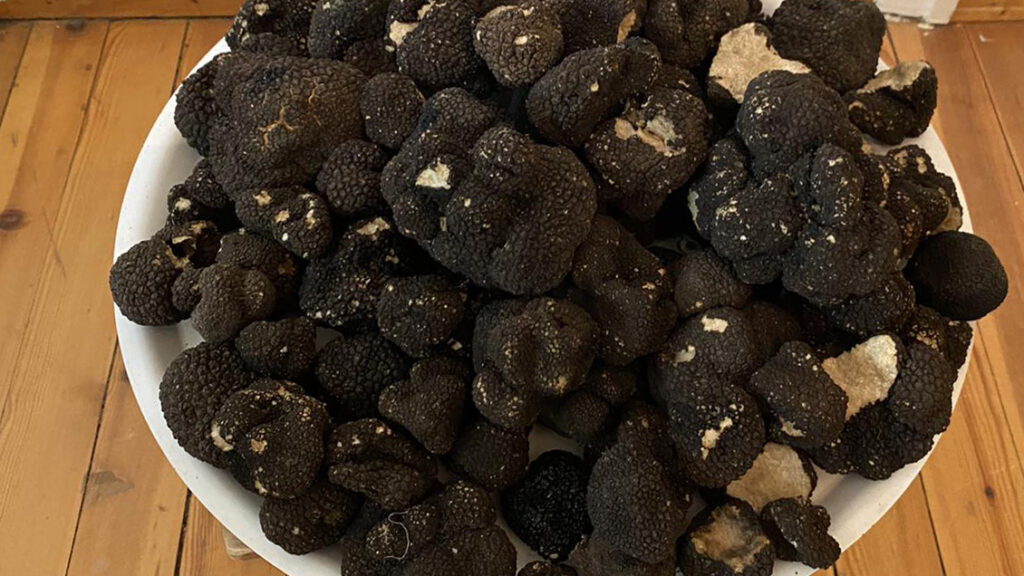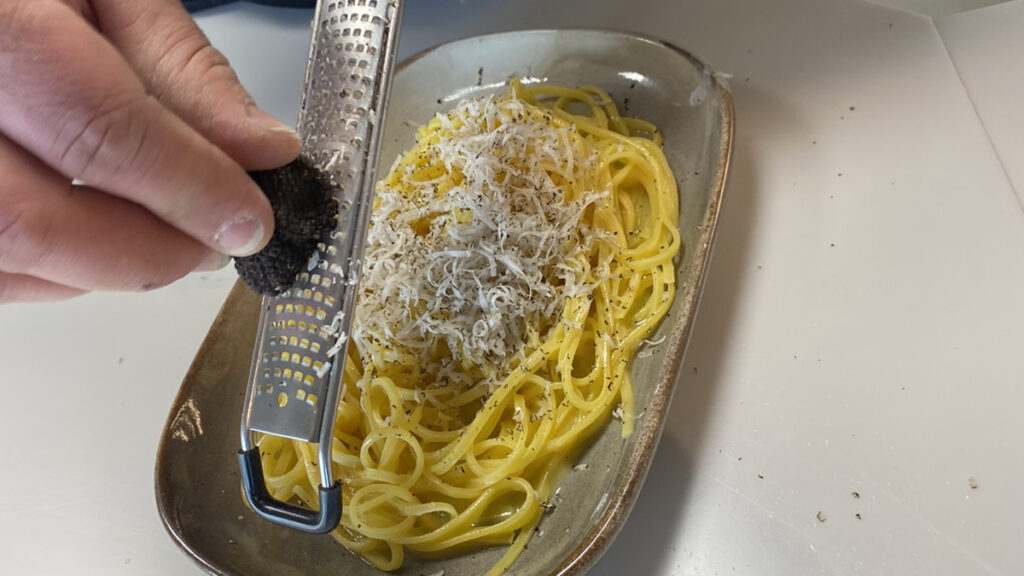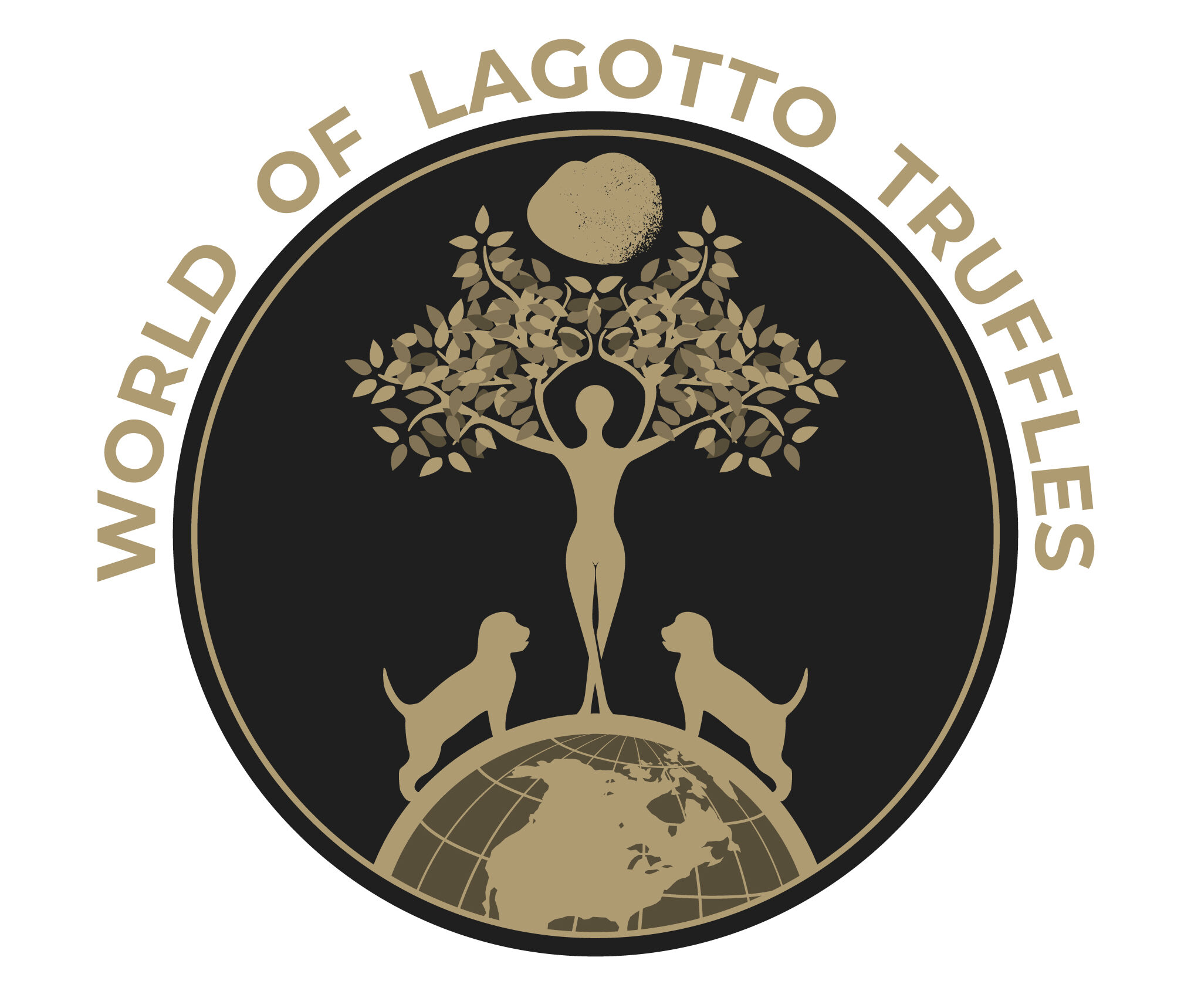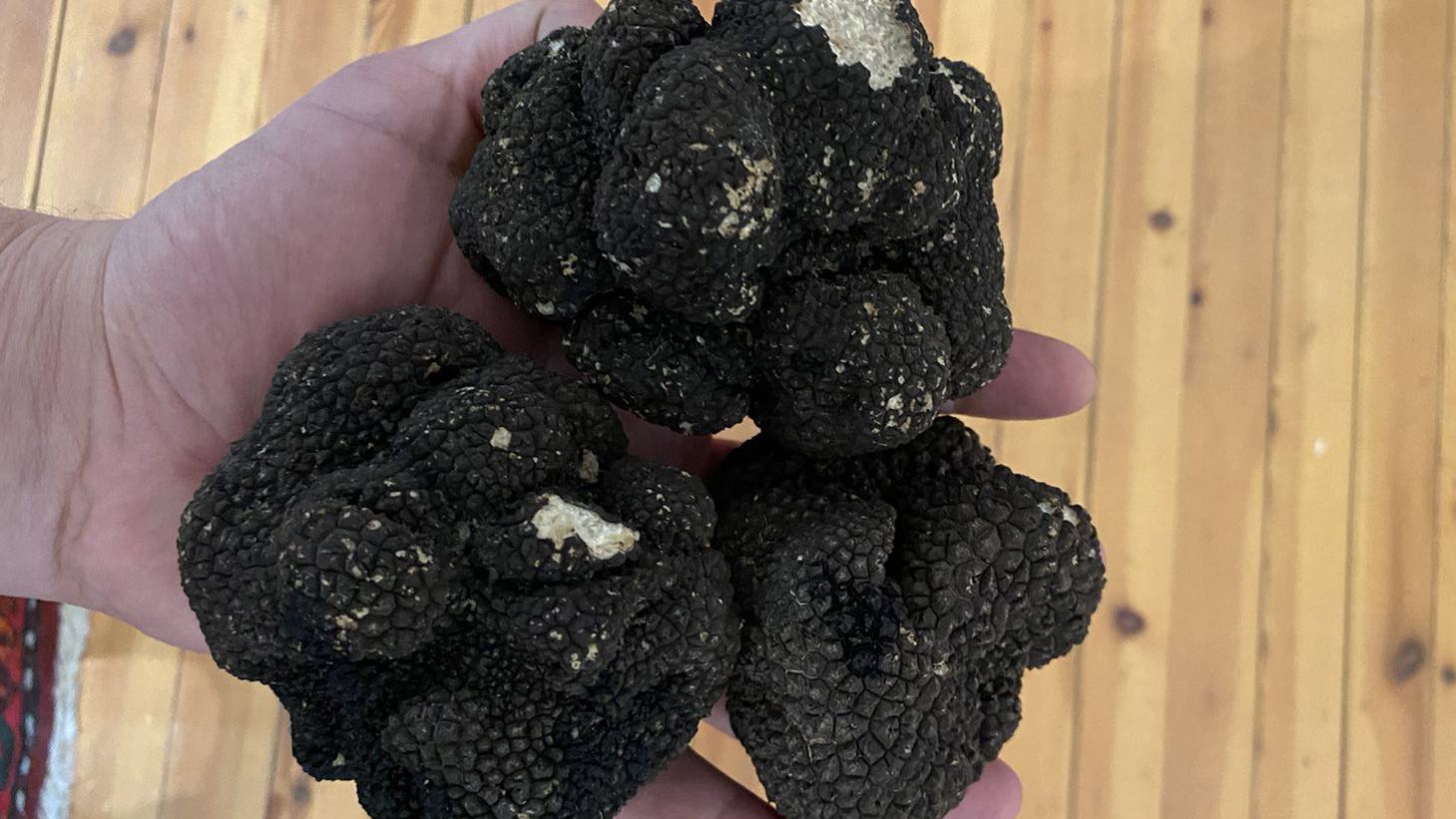Truffles, those highly prized and sought-after culinary delicacies, have captivated the senses of food enthusiasts and connoisseurs for centuries. Among the different truffle species, Tuber Aestivum stands out as a seasonal delight, cherished for its unique aroma and flavor.
In this article, we will explore the fascinating world of Tuber Aestivum, its characteristics, culinary uses, health benefits, and more.
Introduction to Tuber Aestivum Season
Truffle hunting and gastronomic indulgence reach their peak during the Tuber Aestivum season. This period, typically spanning from late spring to early autumn, marks the prime time for truffle enthusiasts to explore the earthy treasures hidden beneath the soil.
What is Tuber Aestivum?
Tuber aestivum, commonly known as the Summer Truffle, is a species of truffle that belongs to the Tuber genus. These edible fungi are characterized by their black exterior and distinctive aroma, making them highly sought after in the culinary world. Tuber Aestivum is renowned for its ability to enhance dishes with its unique flavor profile.
Characteristics of Tuber Aestivum

Appearance and size
The Summer Truffle varies in size, ranging from that of a hazelnut to a tennis ball. Its exterior is rough and black, often adorned with intricate patterns and indentations.
The inner flesh, known as the gleba, boasts a marbled appearance, with white veins interlacing through the black truffle body. This distinct visual appeal adds a touch of elegance to any dish it graces.
Aroma and flavor
Tuber Aestivum is celebrated for its captivating aroma, which is often described as earthy, musky, and reminiscent of nuts. The complex scent profile entices the senses, infusing dishes with a rich and aromatic essence.
When it comes to flavor, the Summer Truffle delivers a harmonious combination of earthiness, umami, and nutty undertones, enhancing the taste of various culinary creations.
Geographic distribution of Tuber Aestivum
Tuber Aestivum can be found in several regions across Europe, including parts of France, Italy, Spain, and the Balkan Peninsula.
The truffle’s natural habitat includes woodlands and areas with specific soil and climatic conditions that are conducive to its growth. These regions have become renowned for their truffle production, attracting both locals and international visitors during the Tuber Aestivum season.
Hunting and harvesting Tuber Aestivum
Traditional methods
Truffle hunting has a long-standing tradition, often involving skilled truffle hunters and their trained truffle-hunting dogs. The process entails exploring truffle-rich areas, such as forests or truffle orchards, in search of the elusive treasures.
The keen senses of the dogs, particularly their ability to detect the truffle’s aroma, play a crucial role in locating these underground delicacies.
Modern techniques
In recent years, technological advancements have also contributed to truffle hunting and harvesting. Some truffle enthusiasts use specially trained pigs instead of dogs, as pigs have a natural ability to detect truffle aromas.
Additionally, there are now truffle cultivation methods that allow for controlled truffle production, ensuring a more reliable supply of Tuber aestivum.
Culinary uses of Tuber Aestivum

Tuber Aestivum has earned its place in haute cuisine due to its exceptional taste and aroma. Here are some popular culinary applications of this esteemed truffle:
Truffle-infused dishes
Chefs and food enthusiasts around the world incorporate Tuber Aestivum into a variety of dishes to elevate their flavors. From truffle-infused sauces and soups to truffle-infused oils and butter, the earthy and aromatic notes of Tuber Aestivum add depth and complexity to the culinary creations.
Truffle-infused pasta, risotto, and scrambled eggs are just a few examples of dishes that benefit from the addition of this luxurious ingredient.
Truffle oils and sauces
Truffle oils and sauces have gained popularity for their ability to impart distinctive truffle flavor to a wide range of dishes.
These condiments are often used as finishing touches or drizzled over salads, grilled meats, or roasted vegetables.
Truffle oils and sauces offer a convenient way to enjoy the essence of Tuber Aestivum without using the fresh truffle itself.
Truffle-based desserts
While truffles are typically associated with savory dishes, they can also lend their unique characteristics to desserts.
Chefs have experimented with incorporating Tuber Aestivum into chocolate truffles, ice creams, and even truffle-flavored pastries.
The unexpected combination of sweet and earthy flavors creates a delightful and memorable dessert experience.
Health benefits of consuming Tuber Aestivum
Beyond its culinary appeal, Tuber Aestivum offers several potential health benefits. While research is ongoing, here are some possible advantages of including this truffle in your diet:
Nutritional value
Tuber Aestivum is a low-calorie food that provides essential nutrients such as carbohydrates, fiber, protein, and minerals like potassium and calcium.
Although the truffle is consumed in small amounts due to its intense flavor, it can contribute to a well-rounded and nutritious diet.
Antioxidant properties
Truffles, including Tuber Aestivum, are rich in antioxidants, which help combat oxidative stress and protect cells from damage caused by free radicals. Antioxidants play a vital role in supporting overall health and reducing the risk of chronic diseases.
Potential medicinal uses
Traditional medicine has recognized truffles for their potential medicinal properties. Tuber Aestivum contains compounds that may have antimicrobial, anti-inflammatory, and immune-boosting effects. However, further scientific studies are needed to fully understand and harness these potential benefits.
Truffle festivals and tourism
Truffle festivals and truffle-related tourism have gained significant popularity in recent years. These events celebrate the gastronomic heritage and cultural significance of Tuber aestivum. Here are some highlights of truffle festivals and tourism:
Famous truffle festivals
Across Europe, truffle festivals attract locals and visitors alike, offering an opportunity to savor truffle-infused dishes, witness truffle hunting demonstrations, and participate in various culinary events.
Festivals such as the Alba White Truffle Fair in Italy and the Perigord Truffle Festival in France showcase the allure of Tuber aestivum and its impact on regional cuisine.
Truffle hunting tours
Truffle enthusiasts can embark on truffle hunting tours, where experienced guides take them on a truffle-hunting adventure in the natural truffle habitats.
These tours provide insights into the art of truffle hunting, the truffle’s lifecycle, and the importance of sustainable harvesting practices.
Culinary tourism
Truffle regions have become culinary destinations, attracting food enthusiasts who wish to explore the local gastronomy centered around these prized fungi.
Travelers can indulge in truffle-focused menus at renowned restaurants, visit truffle markets to purchase fresh truffles, and immerse themselves in the rich culinary traditions that revolve around Tuber aestivum.
Conservation efforts and sustainability
As the demand for Tuber Aestivum continues to rise, conservation efforts and sustainable practices are crucial to ensure the preservation of this valuable species. Here are some aspects to consider:
Challenges in preserving Tuber Aestivum
The natural habitat of Tuber Aestivum is susceptible to deforestation, pollution, and changes in land use, which pose threats to the truffle’s survival.
Additionally, over-harvesting and improper harvesting techniques can deplete truffle populations. It is essential to address these challenges and promote sustainable practices to protect Tuber Aestivum for future generations.
Sustainable truffle farming
To meet the growing demand and preserve wild truffle populations, sustainable truffle farming has emerged as a viable solution. Truffle farmers employ cultivation techniques that mimic natural conditions, fostering the growth of Tuber Aestivum in controlled environments.
This approach not only ensures a more sustainable supply of truffles but also provides economic opportunities for local communities.
Culinary tips for cooking with Tuber Aestivum
Cooking with Tuber Aestivum requires careful consideration to make the most of its unique flavors. Here are some culinary tips for working with this exquisite truffle:
Pairing with other ingredients
Tuber Aestivum pairs well with ingredients that complement its earthy and nutty profile. Consider combining it with ingredients such as mushrooms, aged cheeses, eggs, garlic, and high-quality olive oil. The truffle’s aroma and flavor can elevate a simple dish into a culinary masterpiece.
Cooking techniques
To fully appreciate the nuances of Tuber Aestivum, it is best to use gentle cooking techniques that preserve its delicate flavors.
Slicing or grating truffles over finished dishes like pasta, risotto, or scrambled eggs allows their aroma to infuse the dish without overwhelming the other ingredients.
Additionally, incorporating truffle slices into sauces or infusing oils with truffles can enhance the overall flavor profile.
Storing and preserving truffles
Fresh truffles are highly perishable and should be consumed as soon as possible to enjoy their optimal quality. To extend their shelf life, store them in airtight containers or wrapped in paper towels in the refrigerator.
Consider placing them with eggs, rice, or other absorbent foods to impart their aroma. Alternatively, you can preserve the truffle’s flavor by making truffle-infused oil or butter.
Tuber Aestivum in popular culture
Beyond its culinary significance, Tuber Aestivum has also made its mark in popular culture. Here are a few notable mentions:
Truffles in literature and art
Tuber Aestivum has been referenced in various literary works, evoking a sense of luxury and indulgence. From classic novels to contemporary literature, truffles symbolize exquisite taste and culinary refinement.
Furthermore, truffles have inspired artists who capture their allure through paintings, sculptures, and other forms of artistic expression.
Truffles in the media
The culinary world’s fascination with truffles has been showcased in numerous television shows and documentaries. From gourmet cooking competitions to travel programs highlighting truffle regions, the media has played a role in popularizing Tuber Aestivum and sharing its story with a broader audience.
The economic importance of Tuber Aestivum
The cultivation, harvesting, and trade of Tuber Aestivum have significant economic implications for the regions where it thrives. Here are some aspects of its economic importance:
Job creation and income generation

Truffle production and the associated industries provide employment opportunities for local communities. Truffle hunters, farmers, truffle traders, chefs, and restaurant staff all contribute to the truffle economy.
The demand for Tuber Aestivum also drives tourism, benefiting various sectors such as hospitality, transportation, and local businesses.
Export and international trade
Countries with substantial Tuber Aestivum production often engage in export and international trade. Fresh truffles, truffle products, and truffle-based condiments are sought after by international markets.
This trade not only contributes to the economy but also promotes cultural exchange and appreciation for regional gastronomy.
Gastronomic tourism
Truffle regions attract gastronomic tourists from around the world who are eager to experience the unique flavors and traditions associated with Tuber aestivum.
These visitors contribute to the local economy by spending on accommodation, dining, guided tours, and truffle-related products, thus boosting the tourism industry and generating revenue.
Conclusion
Tuber aestivum, the Summer Truffle, holds a special place in the culinary world due to its captivating aroma and distinctive flavor.
From its seasonal availability to its culinary versatility, this esteemed truffle continues to delight food enthusiasts and contribute to the rich tapestry of gastronomy.
Whether enjoyed in truffle-infused dishes, appreciated for their potential health benefits, or celebrated at truffle festivals, Tuber Aestivum exemplifies the intersection of nature, culture, and the art of fine dining.
FAQs (Frequently Asked Questions)
- What is the best way to store fresh Tuber Aestivum truffles?
To preserve the freshness of fresh truffles, store them in an airtight container or wrapped in paper towels in the refrigerator. Replace the paper towels regularly to prevent moisture buildup. - Are there any vegetarian or vegan dishes that incorporate Tuber Aestivum?
Absolutely! Tuber Aestivum can enhance the flavors of vegetarian or vegan dishes. Try adding truffle shavings to roasted vegetables, truffle-infused oils in salad dressings, or truffle-infused sauces in plant-based pasta dishes. - Are there any alternatives to truffle hunting with dogs?
While dogs are commonly used for truffle hunting, there are alternatives. Some truffle hunters use specially trained pigs, which have a natural ability to detect truffle aromas. However, dogs remain the preferred choice due to their ease of training and compatibility with the hunting process. - Can I cultivate Tuber Aestivum in my backyard?
While it is possible to cultivate Tuber Aestivum, it requires specific soil conditions, appropriate climate, and patience. It is advisable to consult with experts or join truffle cultivation programs to ensure successful cultivation. - Is there a specific season for truffle festivals?
Truffle festivals typically coincide with the Tuber Aestivum season, which spans from late spring to early autumn. However, festival dates may vary depending on the region and local truffle harvest.

